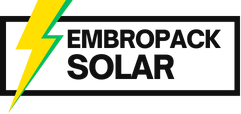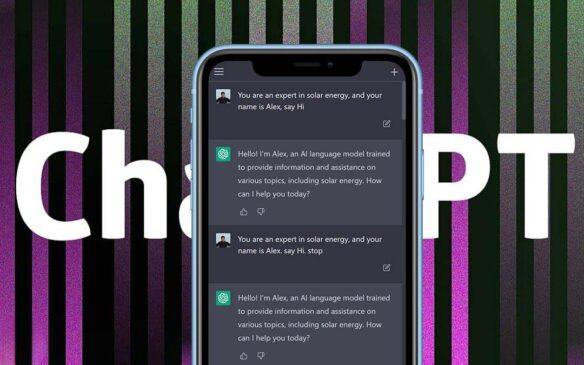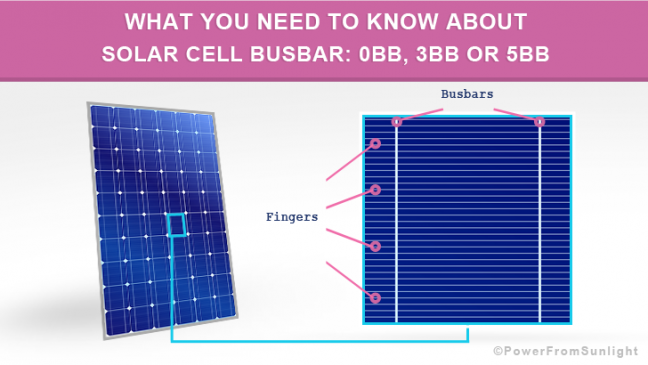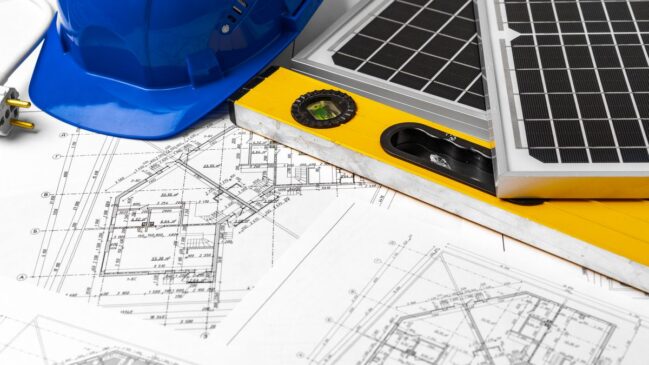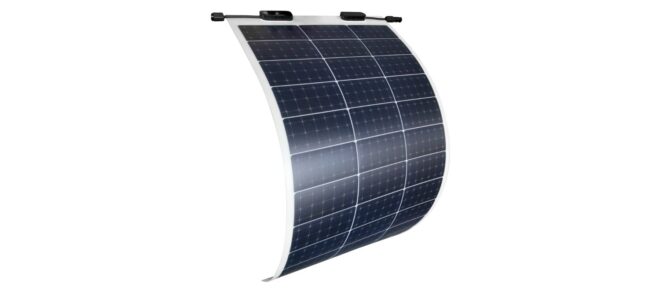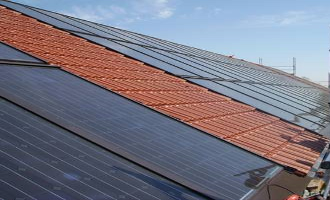
The Green Card For Solar PV Panels
Solar panel manufacturers who want to export their solar PV panels worldwide must test them according to the International Safety Standards.
However, the world ends at the door of North America. There, national safety regulations are applicable, which necessitate a special test at the Underwriters Laboratories (UL), an American safety consulting and certification company.
What is UL (Underwriters Laboratories)?

Copyright © http://www.ul.com/
In 1894, an American electrical engineer called William Merrill founded an office in Chicago for safety tests with the name Underwriters Laboratories (UL).
Over 120 years after the foundation, the UL laboratories have become a well-known American certification company. They manage 73 test laboratories in 104 countries and check among other things, electric cables, drinking water as well as fire protection and medical devices to verify their safety.
The IEC-certification provides the basis for global trade

So that, the international trade works smoothly, the International Electrotechnical Commission (IEC) has developed safety standards, which are valid for the whole world. For example, in Germany, the TÜV Rheinland assigns IEC-certificate for solar PV modules.
Regardless of whether PV modules are shipped to Europe, Australia, Asia, Africa or South America, the IEC test seal is recognized everywhere. In some countries, there are national supplements, and besides, in Europe, the EU standards are valid. However, the IEC-certificate provides the basis for global trade.
UL 1703: The entry permit for solar PV panels In North America

Copyright © http://www.solarackusa.com/docs/ul-certifications/
In North America other national rules are applicable. To export to Canada and the USA successfully, the solar panel manufacturers should have the North American safety certificate called UL 1703, which is something like an entry permit for solar PV panels.
The international safety standard IEC 61730 (Photovoltaic (PV) module safety qualification) is meaningless here. It is true that there are only a few differences between the two safety tests, but a certificate with the provisions of American National Standards Institute (ANSI) is indispensable if you want to be recognized in North America.
Why should solar panel manufacturers pass two safety tests?

In North America, the technical equipment is different from that of Europe. The power supply is highly fragmented, and the old electrical lines are often overloaded. This regularly leads to power failures in the USA.
There are also added differences between the USA and other countries, for example, in Germany the electrical cables in houses run beneath the plaster walls. Americans often live in wooden houses, and the electrical cables lie here in bare wooden skeletons. The fire risk is extremely high.
Therefore, the fire tests are always an important part of the UL 1703. They are also prescribed in the National Electrical Code (NEC) of the USA, which regulates the safety standard for electrical installations.
Differences between the IEC 61730 and UL 1703
There are no significant differences between the IEC 61730 and UL 1703. Both define in their guidelines the necessary criteria for construction of the modules and describe the requirements for the materials used. Only a good look for details makes the differences visible.
So, the UL safety test has in its program the “Leakage Current Test” Here the technicians test, if leakage currents occur in the module frame or the back sheet. This test does not exist in the IEC 61730, which also does not make the “Corrosive Atmosphere Test”. It is intended for solar PV panels which are used near the sea, where there is high salt content in the air.
Also, there is no Arcing Test in this IEC-Norm, in which, the UL check, whether an electric arc can arise in the damaged areas of the PV module, such as an open solder joint. A high voltage at the defect section can be higher such that an electric arc flashes. However, despite the UL-test: The risk of an electric arc cannot be excluded.
Another difference that cannot be overcome is the protective earthing at module frame. It is mandatory in the USA, so provides the National Electric Code (NEC).
In the IEC-standard, this problem was resolved through well-insulated solar PV panels; they comply with the Protection Class II. The UL does not recognize this solution. Therefore, modules with Protection Class II should also carry out the UL-test to prove their protective earthing.
In other subjects, such as the testing requirements, the IEC 61730 is much stricter than die UL 1703.
An additional contrast to the ANSI/UL-standards is that the IEC-standards are developed internationally. Its name comes from the International Electrotechnical Commission (IEC), which made up of over 70 national committees. All committees are contributed to the development of the new standards. Also, the UL is a member of the IEC-Committee.
As regards fire safety there is no difference between the two standards. Indeed, the UL declare at every opportunity, that they are distinguished in particular by its fire tests, but they have implemented in the IEC-Committee, that their fire determinations can also be taken on the IEC- standards. So, this subject is in the two tests, the same.
One thing becomes apparent: the comparison between the two testing standards is never-ending. However, the scale pans will always be equalized. The UL’s standard test is more extensive than the IEC, but the other is more stringent. Nonetheless, both standards have the same purpose: a secure solar module.
The following table summarizes the test procedures of the IEC 61730 and UL 1703 (MST stands for Module Safety test):
| IEC 61730 (Photovoltaic (PV) module safety qualification) | UL 1703 (Standard for Flat-Plate Photovoltaic Modules and Panels) |
|---|---|
| Visual inspection MST 01 | Temperature Test |
| Performance at STC MST 02 | Voltage, Current and Power Measurements Test |
| Maximum power determination MST 03 | Leakage Current Test |
| Insulation thickness test MST 04 | Strain Relief Test |
| Durability of markings MST 05 | Push Test |
| Sharp edge test MST 06 | Cut Test |
| Bypass diode functionality test MST 07 | Bonding Path Resistance Test |
| Accessibility test MST 11 | Dielectric Voltage-Withstand Test |
| Cut susceptibility test MST 12 | Wet Insulation-Resistance Test |
| Continuity test of equipotential bonding MST 13 | Reverse Current Overload Test |
| Impulse voltage test MST 14 | Terminal Torque Test |
| Insulation test MST 16 | Impact Test |
| Wet leakage current test MST 17 | Fire tests |
| Hot-spot endurance test MST 22 | Water Spray Test |
| Fire test MST 23 | Accelerated Aging Test |
| Ignitability test MST 24 | Temperature Cycling Test |
| Bypass diode thermal test MST 25 | Humidity Test |
| Module breakage test MST 32 | Corrosive Atmosphere Test |
| Screw connections test MST 33 | Metallic Coating Thickness Test |
| Static mechanical load test MST 34 | Hot-Spot Endurance Test |
| Peel test MST 35 | Arcing Test |
| Lap shear strength test MST 36 | Mechanical Loading Test |
| Materials creep test MST 37 | Wiring Compartment Securement Test |
| Robustness of terminations test MST 42 | Factory Dielectric Voltage-Withstand Test |
| Thermal cycling test MST 51 | Factory Voltage, Current, and Power Measurements Test |
| Humidity freeze test MST 52 | Grounding Continuity Test |
| Damp heat test MST 53 | |
| UV test MST 54 | |
| Cold conditioning MST 55 | |
| Dry heat conditioning MST 56 |
